Introduction to Sedum Pruning
If you’re pondering over the pruning shears in your garden and casting a contemplative eye on your sedum, you might be wrestling with the decision of should I prune sedum in the fall? Let’s cut through the congestion of common gardening advice and get to the green heart of the matter. Pruning sedum plants isn’t just about a tidier garden – it’s a strategic move that can greatly benefit these hardy succulents. And the timing? It can be everything.
Imagine this: your sedum, a star of the autumn garden, sprawling unchecked. The once vibrant leaves begin to droop, making your garden bed look more like a bed that’s been slept in rather than a crisp, well-tended floral display. By selectively snipping in the fall, we prevent this unkempt scenario. Healthy, more robust growth is encouraged, and pests and diseases that love to take over when a plant is down are shown the garden gate.
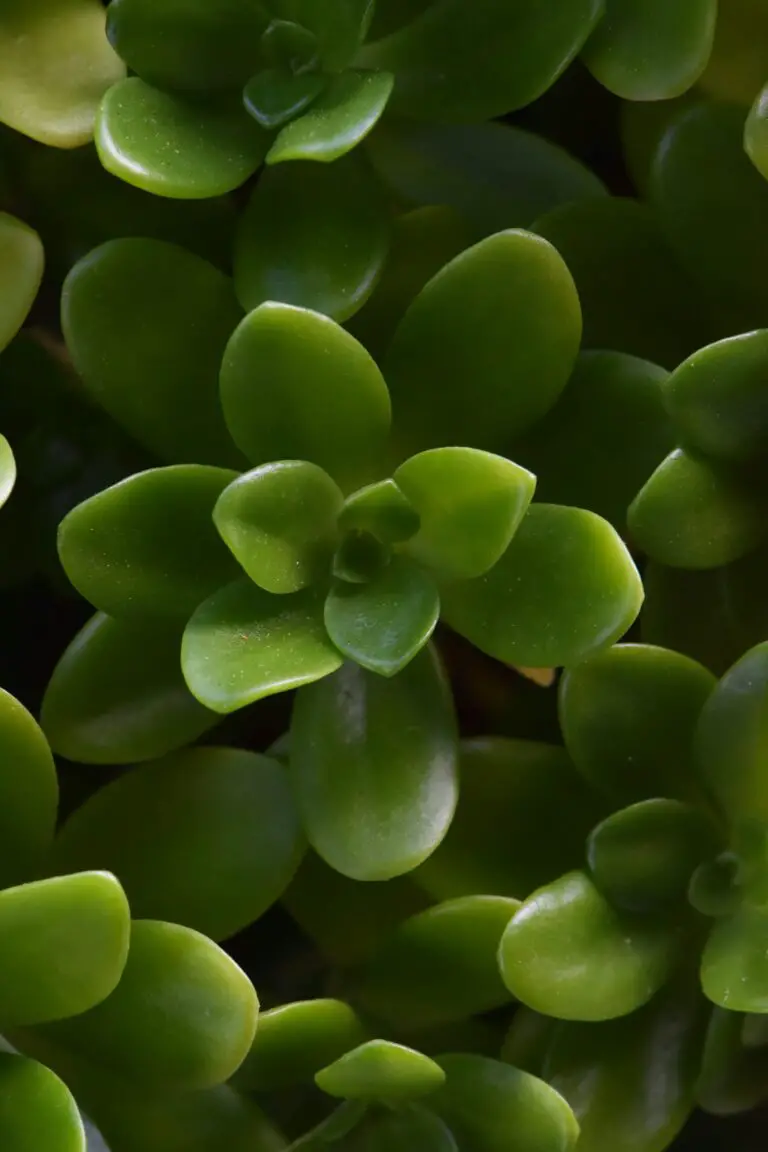
It’s not just about preemptive plant healthcare or aesthetics; the act of pruning can have a profound impact on the vitality of your sedums. When done correctly and at the right time, such as the fall months, it redirects the plant’s energy towards stronger roots and more vigorous growth in the spring. Much like a well-needed retreat that rejuvenates the spirit, fall pruning gives sedum the chance to rejuvenate from the soil up. For an in-depth exploration of the benefits and techniques of pruning sedum, an expert guide can help turn your green-thumbed intentions into blooming realities.
So, whether your sedum plants are the show-stopping ‘Autumn Joy’, the bee-charming ‘Brilliant’, or any other member of the sedum family, a thoughtful trim as the days grow shorter could be the key to unlocking their full potential. Fall may be a time of winding down for many plants, but for sedum, it’s a season of preparation, ensuring that when spring rolls around, it’s ready to roll out a carpet of refreshing green and vibrant blooms.
What is Sedum?
Let’s take a meandering stroll into the garden and put the spotlight on a versatile superstar: sedum. Also known as ‘Stonecrop,’ they’re like the Swiss army knife of the plant world—they adapt, they enchant, and they thrive. Picture a sedum and you might imagine fleshy leaves packed with moisture, ready to face the sun’s blaze without so much as wilting. What’s not to love?
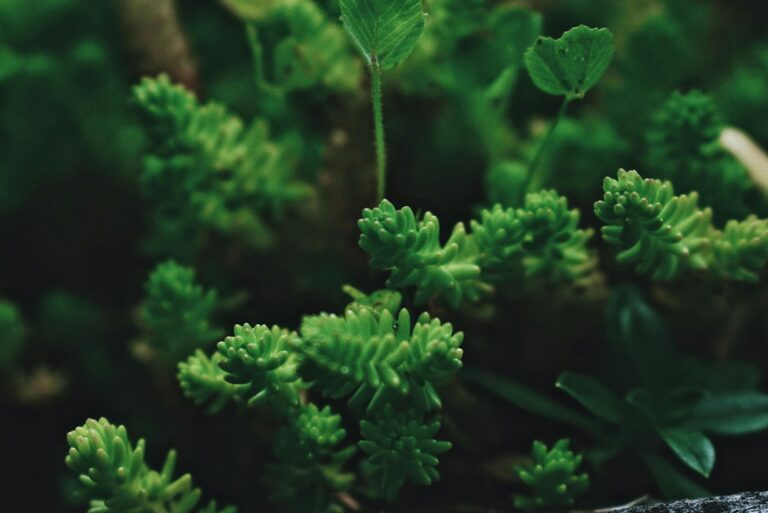
From petite ground-huggers to statuesque border guards, sedums come in a dazzling array of forms. Some wear a mantle of starry blossoms, while others flaunt rosettes that could rival any floral bouquet. Think of the Sedum telephium, with its upright stance and clusters of pink blooms, or the ‘Dragon’s Blood’ sedum that paints the ground in a carpet of crimson. Given the spectacular variety available, there’s a sedum for every nook and flair in your garden’s tapestry.
What binds these varieties is their unshakable resilience and low-maintenance nature. They’re the laid-back friends in your garden, thriving with minimal fuss. It’s no wonder that those in the know constantly find ways to weave these hardy perennials into esoteric gardening conversations and plots alike. Their soft, succulent leaves store water to carry them through droughts, and they stand tall against pests and diseases. As a bonus, butterflies and bees can’t resist their sweet nectar—a true win-win for the ecosystem!
So, whether you’re a seasoned green thumb or just dipping your toes into the fertile world of gardening, sedums are allies worth having on your team. Robust, radiant, and remarkably easy to grow, these versatile plants are a testament to nature’s ingenuity. And when the question comes up, “Should I prune sedum in the fall?” the real question might be—why not let these hardy beauts showcase their full, untrimmed glory as long as possible?
The Benefits of Pruning Sedum
Imagine a vibrant garden where your sedum not only survives but thrives, boasting lush foliage and a kaleidoscope of blooms. This utopian vision isn’t just a dream—it’s achievable through the art of pruning. Now, let’s talk turkey about why snipping and trimming your sedum this fall can lead to a more robust and enchanting garden experience.
Plant Health: The number one perk of pruning? It’s like a spa treatment for your sedum. By cutting back the old, you encourage the new. Think of it as the plant version of out with the old, in with the new. This goes beyond just appearances; your plants will actually be healthier. Removing parts that are dead, damaged, or diseased keeps your sedum from wasting precious resources on parts that are past their prime. Plus, it reduces the risk of pests and diseases that love to settle into those nooks and crannies.
Aesthetic Appeal: Just as a haircut can make us feel like a new person, a good prune can make your sedum look all spruced up. We’re talking about shaping your plants to enhance your garden’s design. You can encourage fuller growth, create engaging patterns, or even prep your sedum for a stunning reveal come spring. It’s like setting the stage now for a garden that’ll make your neighbors pea-green with envy.
Blooming Brilliance: Ah, the flowers! Sedum, famed for its late-summer and fall blossoms, can put on a more impressive show with a little prep work. Pruning in the fall can mean more flowers and for a longer time. It’s all about understanding the right time to prune for optimal bloomage. Sometimes, it’s about promoting those second chances—some sedum varieties will rebloom after a trim, giving you double the pleasure.
Pest and Disease Management: It’s not just about the beauty; it’s also very much about battling the baddies. By reducing overgrowth, you’re messing up the hangouts for insects and fungi that want to turn your sedum into their personal buffet. Goodbye, unwelcome critters; hello, healthy plants. Proper pruning improves airflow among the leaves and stems, drying out damp, disease-prone areas and making it less inviting for pests to set up shop.
Pruning isn’t just a chore; it’s a strategy. It’s being proactive about plant care so that come spring, your sedum plants are ready to grow and glow like never before. If your thumb is already twitching to grab those shears, be sure to check out our other expert gardening tips to finesse your technique and become the sedum whisperer of your neighborhood.
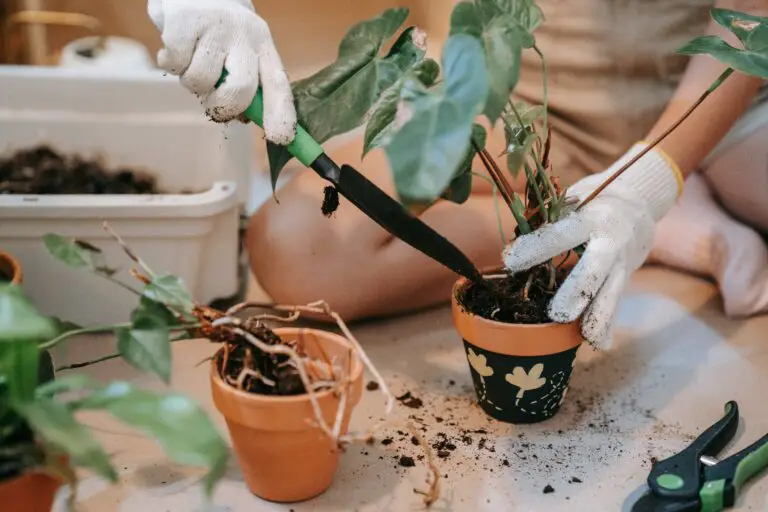
Should I Prune Sedum in the Fall?
As the autumn leaves start to turn their charming shades of amber and auburn, a question arises in the heart of every gardener: should I prune sedum in the fall? Let’s dive deep into the rhythms of nature to understand the best practices for these resilient plants. Pruning, a fundamental horticultural technique, is not just about keeping your garden tidy; it’s about choreographing a dance with the seasons to ensure the prosperity of next year’s growth.
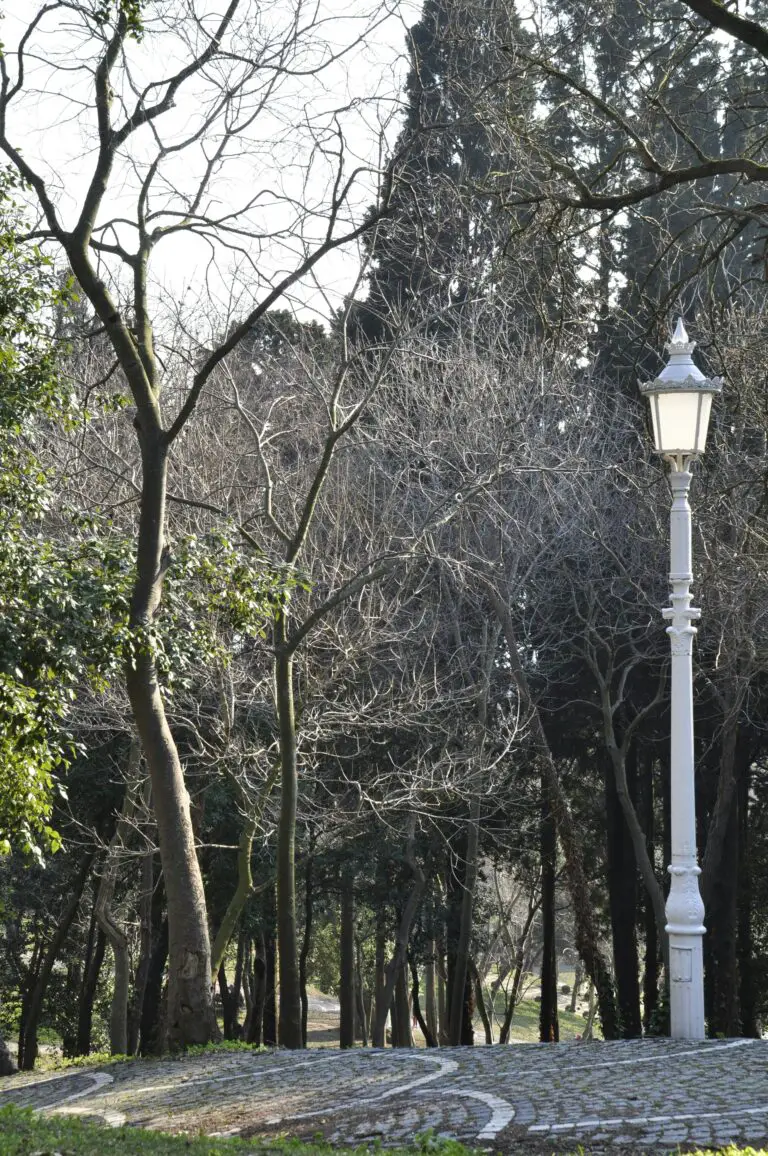
Consider the sedum, often the backbone of the fall garden with its hardy nature and attractive foliage. The idea isn’t to take your shears and go on a cutting spree. Instead, it’s about timing and technique. Pruning sedum too early can lead to a garden lacking color when most perennials have retired. However, leaving them unpruned can result in a messy appearance and potential damage to the plant structure under the weight of snow in colder regions.
Picture this: It’s a crisp fall morning, and you’re in your garden, contemplating your beautiful spread of sedum. They’re not just plants; they’re a testament to your care and effort. The right time to prune is when they’re entering dormancy. At this stage, sedum benefits from a slight trim back, allowing them to focus their energy on their roots, ensuring a robust return when spring arrives.
In our guide on creating a rabbit-proof garden, we discuss how the sturdy nature of sedum makes them a resilient choice for such spaces. This resilience is exactly why a proper fall pruning can be beneficial. It encourages new growth and prevents the center of the plant from becoming too woody and sparse.
To sum it up, don’t rush with those pruning shears as the first leaf falls, but don’t wait until your sedum are buried in snow, either. There’s a harmony to be found in the fall pruning process that can set the tone for a thriving garden. So, will your sedum be getting that trim this fall? If you listen closely, you might just hear them whispering, “Yes.”
Should You Prune Sedum in the Fall? Timing is Everything
When autumn’s paintbrush turns the landscape into a canvas of oranges and reds, gardeners begin to ponder, “Should I prune sedum in the fall?” Let’s slice into the meat of the matter with some expert advice and hands-on guidance. Gardening, like any good recipe, requires a balance of ingredients, timing, and technique—pruning your sedum is no exception.
How to Properly Prune Sedum in the Fall
Before you take snips to stems, let’s get clear on the tools of the trade. You’ll need a good pair of gardening shears—sharp and clean. Sterilize your shears with some rubbing alcohol to prevent any spread of disease. Pruning is a bit like surgery for your plants, and we’re aiming for a clean cut, not a mess!
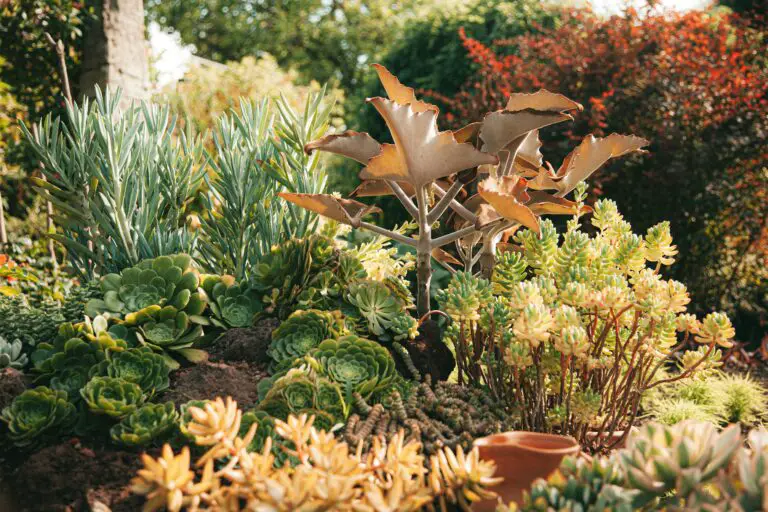
As the days shorten and the evenings cool, it’s the ideal time to tidy up your sedum. A key to a successful prune is understanding the timing. Wait until the plants have finished blooming and are starting to go dormant. This typically occurs after the first light frost, signalling to your sedum that it’s time to close up shop for the winter.
Next, consider the extent of your pruning. Are we talking a light trim or a major chop? Sedum can be quite forgiving, but it’s wise to aim for removing no more than the top one-third of the plant. This will encourage your sedum to come back with gusto in the spring. Imagine cutting back an overgrown hedgerow—removing too much at once can be a shock to the system. The same applies to your sedum. A mindful, methodical approach will see your sedums thrive.
As you prune, visualize the end result. A healthy sedum plant should have a mounded, compact shape sans any woody, leggy branches. Draw inspiration from art; think of each snip as a stroke on the canvas of your garden. Remove any dead, damaged, or diseased stems first. This not only cleans up the appearance but also prevents potential problems in the next growing season. As Bob Ross might say, we’re looking for “happy little plants”, not a tangled mess of unhappy stems.
Once you’ve achieved the desired shape and removed any unsightly stems, step back and admire your handiwork. Your sedum is now prepared to face the winter and emerge renewed and ready for spring. Remember, pruning is part art, part science, and wholly satisfying!
Common Mistakes to Avoid When Pruning Sedum
As the fall foliage flares up with vibrant hues, the gardeners’ clippers itch for action. Pruning sedum in the fall might seem like a good idea to tidy up your garden, but, oh dear, it’s a slippery slope! Let’s talk about the snips and snags that could leave your sedums sulking.
Overeager Shears: Timing is Not Just a Suggestion
Who hasn’t been tempted to give their plants a quick trim for a neatened look? But beware, trimming sedum too early in the fall can spell trouble. These hardy succulents need their foliage to gather all the sunlight they can before winter. Instead of an early chop, wait until the sedum naturally dies back and the stems feel woody. The perfect pruning period? Think late fall or early winter, after a few hard frosts have hit.
The Ruthless Chop: Sedum’s Top Is Its Treasure
Picture this: a sedum standing tall, crowned with starry flowers that draw in pollinators and add winter interest. Now, imagine slicing that off prematurely. Whoops! A common blunder is cutting the sedum back too severely. This not only deprives wildlife of a valuable food source but also removes the plant’s natural shield against frost. Aim to leave about 4-6 inches of the stem when pruning, ensuring you don’t take away its winter armor.
The All-or-Nothing Approach: Diversity is Sedum’s Strength
Let’s say you’ve got a sedum variety that’s more ‘Autumn Joy’ than ‘Summer Glory’; chopping all of them down at once is a no-go. Different sedum types may require different pruning times. Some might benefit from a trim, while others are better off untouched. Mix it up! By pruning selectively, you maintain a garden that’s both diverse and dynamic, reducing the risk of disease and encouraging a variety of growth patterns.
Take a hint from a seasoned gardener’s tales of woe: a friend, eager to prep her beds for winter, pruned all her sedums in early September. The result? A drab winter garden and a lackluster spring comeback. Don’t be like her; mark your calendars and arm yourself with patience.
For visual learners and those who need a more concrete demonstration on how to do it right, here’s a nifty video that provides tips on pruning sedum the right way!
Remember, folks, pruning sedum in the fall isn’t about following a rigid timetable—it’s about observing, understanding the needs of your plants, and responding accordingly. Avoid these common mistakes, and your garden will thank you with a flourish of healthy growth come springtime. So, hold your clippers high and cut wisely—not too early, not too much, and never all at once.
Fall Gardening Tips: Caring for Sedum Post-Pruning
Once you’ve given your sedums a good fall trim, your garden duties are far from over. It’s time to shift your focus to the aftercare that will ensure they bounce back vigorously come spring. Imagine tucking your little green friends in with a cozy blanket of mulch, just right to protect them from the chill.
The first thing on the post-prune agenda? Watering. But we’re not talking about a torrential downpour here – it’s about giving them just enough moisture to settle in without leaving them soggy. Think of it as serving a fine wine — you want to pour the perfect amount. A deep, calming drink right after pruning helps sedums recover and prepares them for their winter dormancy.
Next up, mulching is like the cherry on top after watering. A light spread of organic mulch can be the difference between a sedum that struggles and one that snoozes happily until spring. But remember, a light touch is crucial – too much and you’ll smother them; too little and they won’t have the protection they need.
As for fertilization, timing is the name of the game. Get this: fertilizing sedum in the fall is about as useful as a chocolate teapot. Why? Because you want those plants to focus on rooting, not sprouting. So hold off on the fertilizing, and let them get down to the business of building a strong base.
Take a break from the reading and check out this insightful video that dives even deeper into the world of after-pruning care:
${‘‘}
Caught that? Great! Now you’re equipped with the know-how to give your pruned sedums the TLC they deserve during the fall. With these tips, you’ll be the talk of the town, or at least the local gardening community. So, don those gardening gloves and show your sedum some love!
Preparing Sedum for Winter: Should You Leave Them Standing?
As the brisk air ushers in the fall season, gardeners often ponder over their perennials: to prune or not to prune? Sedums, with their fleshy, succulent leaves, are a particular topic of debate. Let’s delve into the dichotomy of choices before the frost sets in, shall we?
Leaving your sedums untouched as winter approaches can be akin to providing a natural art installation in your garden. Frost-kissed sedum flowers stand as stoic sculptures, offering a stark yet stunning contrast against the barren landscape. Plus, the seed heads atop their sturdy stalks become a smorgasbord for birds that remain for the cold months. As the snow falls, the lacy network of sedum stems creates a picturesque scene, complete with a backdrop of birds flittering about in a live-action winter tableau.
Beneath the Snow: Pros of Unpruned Sedum
From an ecological standpoint, unpruned sedums offer refuge for the small critters in your garden. Insects tuck themselves into the hollow stems and beneath the decaying foliage for the winter, building micro-habitats that support biodiversity. Furthermore, allowing sedum to remain standing protects the crown of the plant from extreme cold, acting as an insulating layer of organic mulch.
However, this untouched approach is not without its minor drawbacks. Aesthetically speaking, not everyone appreciates the ‘wabi-sabi’ or the beauty in decay. Some might find the browned and often bedraggled appearance of last season’s growth a bit unsightly amidst the neat lines of hibernating gardens.
Beauty and Beasts: The Aesthetic Argument
Yet, for every garden purist, there’s a wild-hearted naturalist who sees beauty in the cycle of life and death within their garden. There is a certain charm in observing frost outlining the detailed architecture of sedum blooms—it’s nature’s way of painting delicate, icy patterns on a living canvas. If your neighborhood is dotted with manicured lawns, your standing sedum garden can become an intriguing, textured focal point: a testament to your dedication to garden wildlife and natural beauty.
On the flip side, some might opt for the tidy, cut-back look, worried that unpruned plants may signal negligence. But fear not, for the intentional gardener knows that each standing sedum is a conscious choice to invite Mother Nature to do her magnificent work.
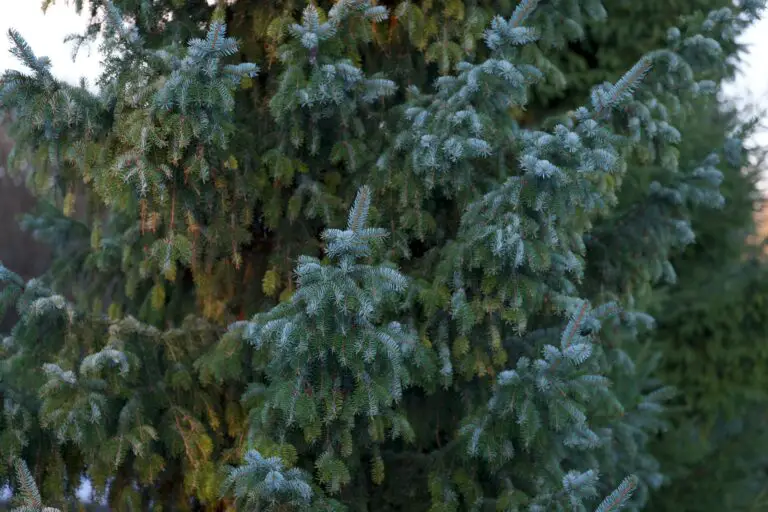
In our quest for control within our verdant domains, sometimes relinquishing a bit of that power can yield a unique and breathtaking winter wonderland, affluent with life and silent serenity. As nature slumbers under the icy caress of winter, your unpruned sedums stand as a testament to endurance, awaiting the rejuvenating kiss of spring to unfurl once more.
Frequently Asked Questions
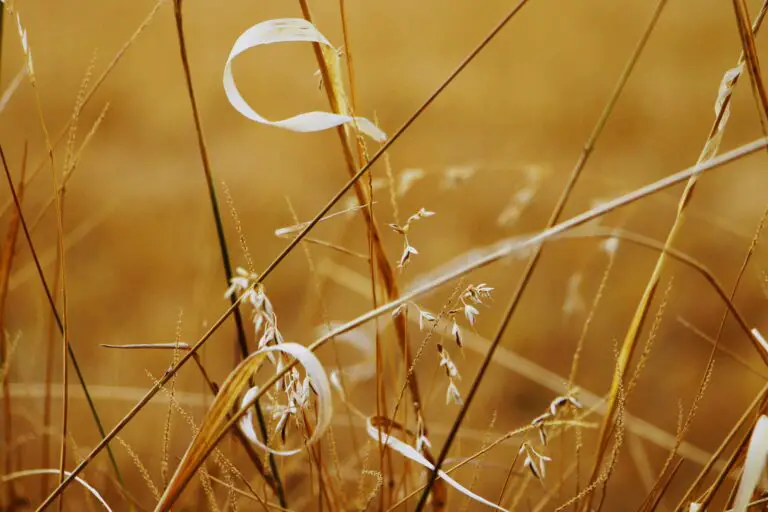
Is It Necessary to Prune Sedum in Fall?
Imagine your sedum as conscientious students who’ve worked hard all summer and now, come fall, they’re gearing up for their final exams. Pruning isn’t always necessary, but when done, it serves as a study session, helping them focus their energy and come out stronger for the winter ahead. It’s a tactical move, depending on your visual and health goals for the plant.
What Happens If I Skip the Pruning?
Sedum plants, left unpruned, may give your garden a natural, albeit unkempt, look. It’s akin to skipping a haircut; you still look fine, but maybe not quite as polished. Unpruned sedum might fall victim to snow damage or become overly heavy, but they also can provide charming winter interest and a buffet for local wildlife.
How Should I Prune My Sedum?
Take a pair of clean, sharp shears in hand, and think of yourself as a sculptor. Your task is to creatively shape the plant without overdoing it. Remove the spent flower heads and any leggy growth to encourage bushier growth next season, just like trimming split ends encourages healthier hair growth.
Can Pruning Impact Sedum’s Next Season’s Performance?
Snip away wisely, and you might just set the stage for a show-stopping performance next year. It’s like giving your sedum a motivational pep talk; a properly pruned plant is more likely to rebound with vigor in the spring, full of gratitude for the tidy up.



